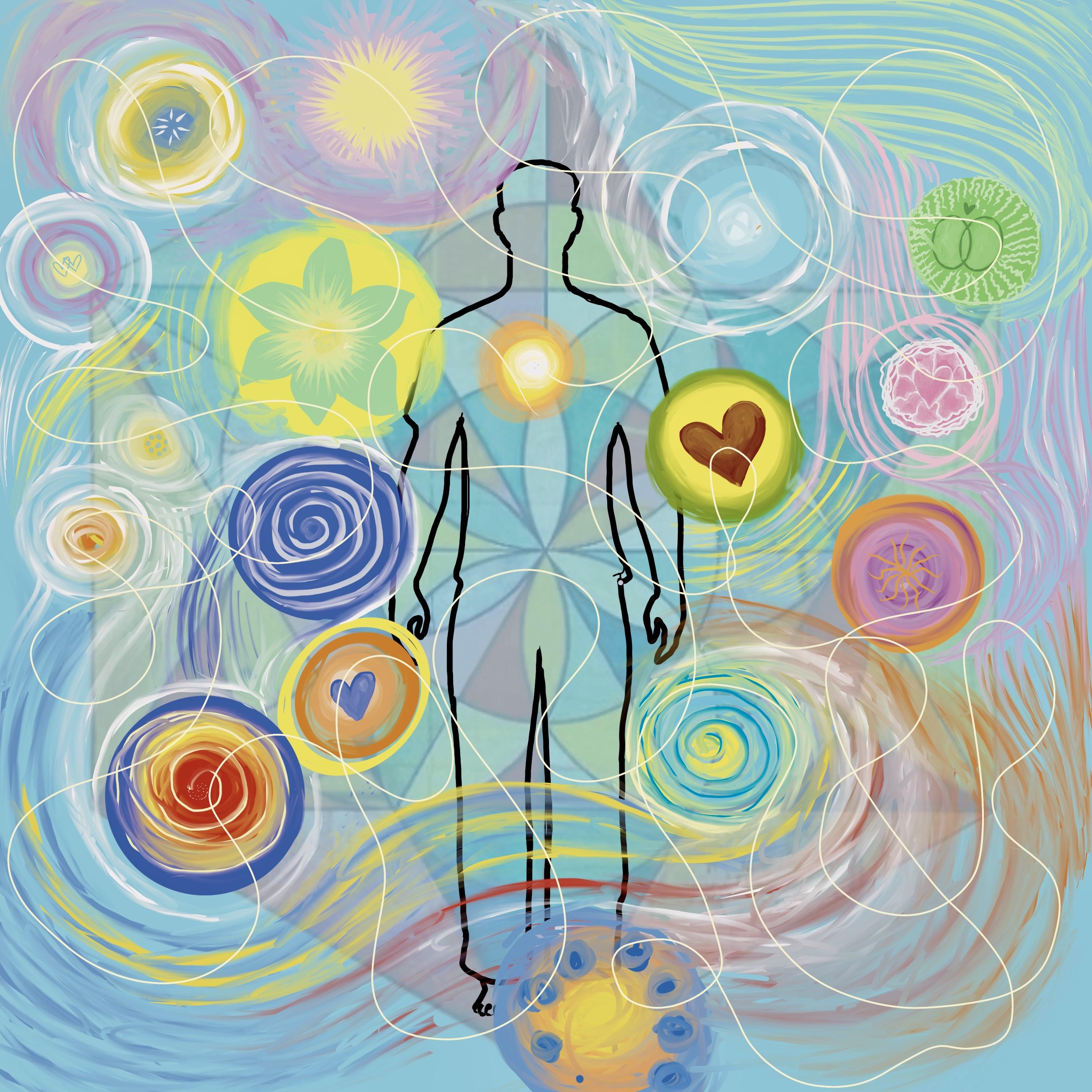A New Energy Grid

IMAGE OF THE WEEK
We are grateful to Rupali Bhuva for offering this hand-made painting for this reading.

In a ceremony a couple years ago, I received a powerful teaching. I was invited to think of some things for which I felt grateful. Various people, items, and situations quickly came to mind. I was invited really to embrace the feeling of gratitude, so that I could better understand its particular qualities: the way it affected my entire sense of being. Then, I was invited to release the objects of gratitude, while retaining the underlying feeling. What remained was gratitude in its purest form: a feeling-without-object — the archetypal energy of “gratitude” itself.
I’ve come to believe that all things are like this. We are swimming through a sea of archetypal energies that interact with one another to produce the world of external phenomena, in much the same way as a neural network renders imagery in response to a prompt. It appears to us that these external objects cause our inner feelings (that man makes me mad, that sunset makes me happy), but they are actually expressions of a deeper underlying reality: a realm of archetypal forces like gratitude, fear, joy, sadness, and love that merge and blend with one another to create the unique characteristics of each lived experience.
These archetypal energies accrue in places over time — creating what we sometimes call the “vibe” of a place. Visit a monastery, and you’ll feel the energy of peace and prayer. Visit a well-loved taverna and you’ll feel the energy of conviviality and celebration. Visit a prison, and you’ll feel the energy of conflict and constriction. Patterns of behavior tend to attract more of the same, so places have a way of becoming even more intensely what they already are, codified in myriad practical ways like architecture, landscape, legislation, and tradition.
How can we change up the “charge” of a place to disrupt the inertia of its inherited patterns? How can we create a new “energy grid” to shape what happens there in the future? Words like “gratitude” are really just pointers to bundles of energy: specific frequencies within the spectrum of all possibilities. Language then is a tool we can use to invoke these underlying energies, which we can gather into mandalic groups that function as intentional maps to guide a particular future. When we have a common map, our collective reality becomes more coherent.
Jonathan Harris artist and technologist known for his work with data, story, and ritual. Excerpted from here.
SEED QUESTIONS FOR REFLECTION: How do you relate to the notion that language is a tool to invoke underlying energies? Can you share a personal story of a time you became aware of the energy behind your words? What helps you disrupt the inertia of inherited patterns in your life?